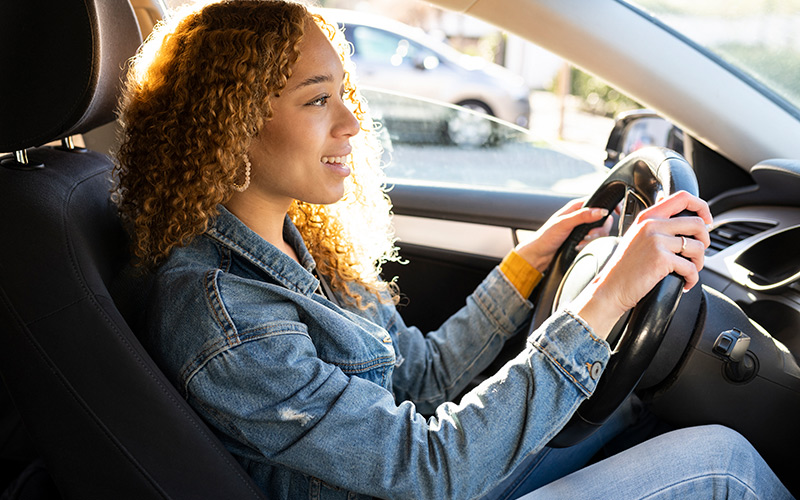A Handy Guide to Car Insurance Groups

In this article, we take a look at what insurance groups mean and some of the different types you may see on vehicle listings.
- Insurance groups are used by insurers to determine the premium you pay for your coverage.
- There are as many as 50 different groups, and the group a vehicle falls into will be based on several factors.
- Vehicles in the lower numbered groups (i.e. group 1) will usually have a lower insurance price to pay, whereas higher-performance vehicles will be in group 50.
- Insurance groups usually take the form of a number followed by a letter (e.g. 15A).
- Your insurance premium can also be affected by your driving history, age, occupation and where you live.
Looking at new or used cars online and wondering what the insurance figure means? This tends to vary between vehicles and is affected by different factors based on both vehicle and driver.
Read on for our useful guide to insurance groups, so you can make a more informed decision when buying your next car.
What are insurance groups?
Insurance groups are used to classify vehicles for insurance costs based on the estimated risk to the insurer.
There are a total of 50 different insurance groups, and the lower the insurance group the lower the insurance premium. Typically, vehicles within groups 1-10 tend to be the cheapest to insure.
Those in higher insurance groups are often more expensive and luxurious. They generally also have a higher-performance engine. In the eyes of an insurer, these will be more likely to become involved in an accident and are therefore more of a risk.
What do the letters in insurance groups mean?
Insurance groups take the form of a number followed by a letter. While the number indicates the group, the letter relates to the vehicle’s safety rating:
- A - indicates the car meets the group’s standards.
- D - means the car does not meet set requirements and is therefore in a higher group.
- E - demonstrates the car exceeds expectations for its group and has been placed in a lower group.
- P - informs that the data is provisional as the rating system was not complete when the car was first launched.
- U - the car’s security is well below the requirements, and may be insured on the condition that specific safety features are installed.
- G - notifies that the car has been imported from elsewhere. These vehicles fall into two further categories: grey imports and parallel imports.
How car insurance groups work
Car insurance groups are determined by the Association of British Insurers (ABI) and the Lloyds Market Association, who work in tandem to assign insurance groups based on several factors.
Using data from Thatcham research, cars will be assigned an insurance group based on the following:
- New car value - a new car’s price is used to provide an indication of the potential associated repair costs.
- Replacement parts - cars with more expensive parts will be more costly to replace, putting them in a higher insurance group.
- Repair costs - the time it takes to repair a vehicle will also play a part in determining the insurance group. The longer the time required, the higher the group.
- Performance - cars with a higher-performance specification will be more expensive to insure, considering performance figures.
- Safety features - cars fitted with modern, advanced safety features are less of a risk and so are placed into a lower insurance group.
- Security - cars fitted with the latest security systems will be less likely to be broken into or stolen, making them cheaper to insure.
How does my driving status affect insurance?
We know that a car’s insurance group can be affected by specific information about the vehicle, but what about the driver?
Insurers will use certain information about you to decide on your insurance premium. There are four main factors, including:
- Age - younger drivers are generally more likely to get into an accident due to their limited driving experience. This is why younger drivers face higher insurance costs for the first few years after getting their licence.
- Location - areas with higher crime rates may cause a vehicle to be placed in a higher insurance group. This is because the likelihood of them being stolen or broken into is increased.
- Driving history – insurers will also consider if you have had any previous convictions or have been involved in accidents in the past.
- Job - your job title can even affect your insurance premium since some jobs naturally carry a higher risk of accidents than others.
How can I lower my insurance costs?
Although the costs of your insurance depend largely on vehicle type and the driver, there are a few things you can do to help lower the costs of your insurance.
These include:
- Opting to pay a higher voluntary excess.
- Having another driver with a good driving history named on your vehicle.
- Building up no claims through having small repairs corrected independently and practising general good driving.
- Paying for your insurance annually which can often get you a small discount and lower interest rates.
- Storing your car somewhere safe at night such as a locked private garage.
Find your next car
Now you know all about the different types of insurance groups, you can make an informed decision when shopping for your next car!
Whether you’re looking for a family hatchback, a stylish saloon, or a practical estate, we’ve got lots of choice at Macklin Motors.
Browse our latest deals for new or used cars now online from the comfort of your sofa.